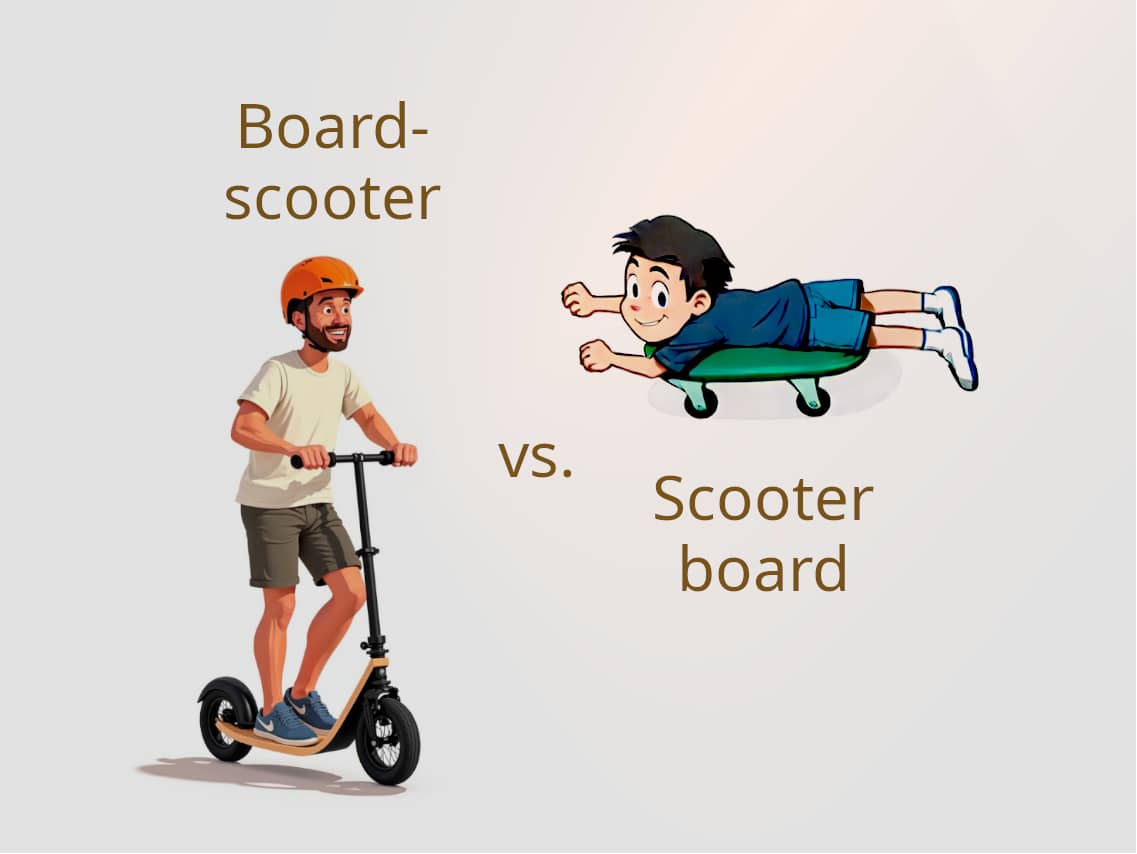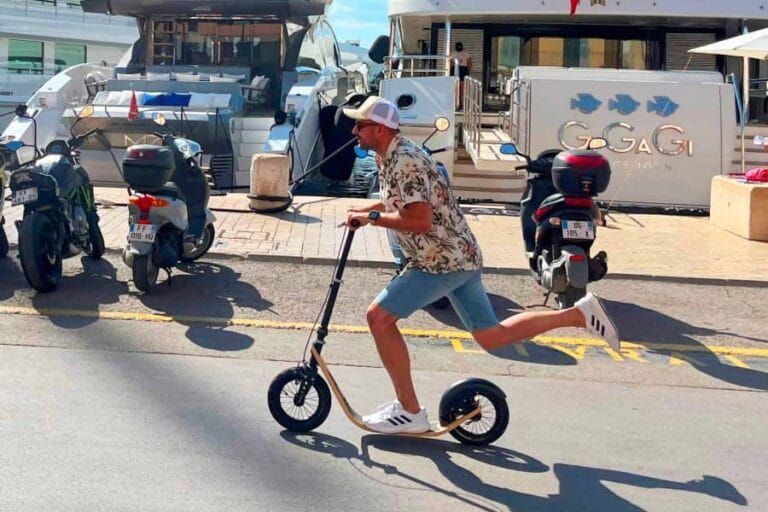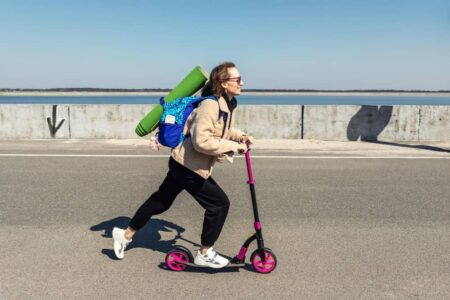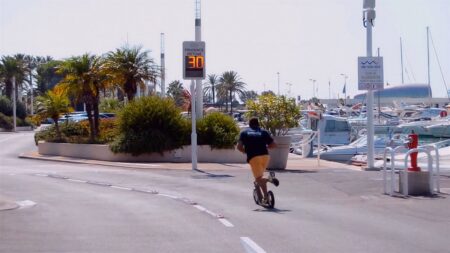
Board Scooter vs. Scooter Board
When people hear the terms “scooter board” and “board scooter” (or “boardscooter”), they may assume these are simply two ways of saying the same thing. In reality, they refer to two entirely different kinds of devices, each with its own purpose, design, and feel. This article explains both, and introduces the boardscooter as a new and evolving category of human-powered movement.
What is a Boardscooter?
A boardscooter is not just a scooter with a “board-shaped” deck. It is a full-length, flexible wooden frame that acts as both the platform and the structure. It even functions as the suspension. This creates a ride that responds naturally to your body, your weight shifts, and the road surface.
In contrast to the trend of making scooters faster or motorized, the boardscooter rethinks the fundamentals. Movement should feel organic, quiet, and deeply connected to the rider. It’s not only about getting from point A to point B. It’s about how it feels on the way.
The Boardy, which originated this concept, remains the only brand focused entirely on this category. Designed for city rides, long-distance rolling, or trail exploration, this boardscooter offer a unique combination of flexibility, smoothness, and minimalist design.

Key Features of a Boardscooter:
- Full-length flexible wooden board as structural frame
- Human-powered, no motor
- Responsive ride: the board flexes with your motion
- Minimal parts, lightweight and durable
- Designed for real-world surfaces (city, trail, cobblestones)
- Sustainable materials and long-term repairability
This isn’t a toy. It’s a crafted machine, tuned for human motion and built to last.
What is a Scooter Board?
The term “roller board” is sometimes also used, though less commonly, to refer to the same type of equipment as a scooter board.
A scooter board is a low-riding, typically plastic platform on four swivel casters. It’s most often used indoors—in school gyms, sensory rooms, or therapy sessions—by children or patients working on coordination and strength.
You ride it sitting or kneeling, pushing with your hands or feet. Its value lies in how it supports motor skill development, balance training, and interactive play.
While scooter boards are often associated with education or therapy, some outdoor-ready models also exist. They’re fun, safe, and remarkably effective tools in pediatric care.
Key Features of a Scooter Board:
- Compact, low-profile plastic board
- Swivel wheels for multi-directional movement
- Used seated or on knees
- Popular in schools and physical therapy
- Encourages coordination, balance, and fun
Two Tools, Two Purposes
Understanding the terminology can be useful, especially when you’re comparing different types of scooters. Whether you’re shopping, researching, or just curious, knowing the distinction can make it easier to find what fits your needs.
| Feature | Boardscooter | Scooter Board |
|---|---|---|
| Riding posture | Standing | Seated or kneeling |
| Intended users | Adults | Children / therapy patients |
| Environment | Outdoor (city, trail, long rides) | Indoor (gyms, clinics), light outdoor use |
| Control mechanism | Handlebar steering | User-propelled with hands/feet |
| Primary function | Transport, fitness, lifestyle | Therapy, coordination, play |
| Material & design | Wood-based, minimal, crafted | Plastic, durable, often stackable |
Conclusion
Boardscooters and scooter boards serve very different purposes. One turns everyday mobility into a responsive experience, while the other supports child development and therapeutic progress. They reflect different needs and ways of engaging with movement. Understanding the distinction simply helps place them in the right context.
Read more
Check out our article “What’s the difference between Kick Scooters and Kick Bikes?” We dive into how kick scooters are great for short city trips, while kick bikes are better for longer rides. And then there’s Boardy — it mixes the two. Big air-filled wheels, a wooden frame that flexes, and a ride that feels both smooth and tough.




